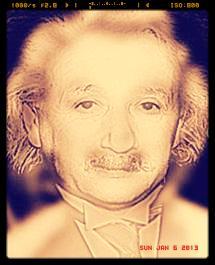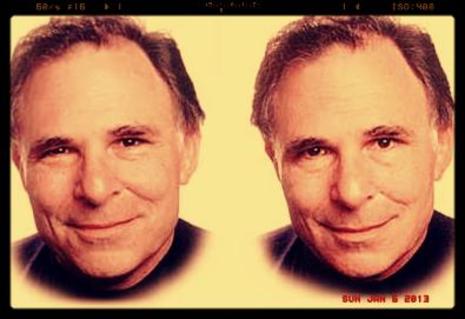Facial Expressions
- There are 43 expression specific muscles in the face
- There are 20 muscle groups that create expressions
- Typically, the more muscles used to create an expression, the more genuine the expression will be.
- It is very difficult to keep track of all 43 muscles.
- Regardless of nationality, people can identify seven human emotions with ease: sadness, happiness, anger, fear, surprise, contempt, interest.
- People will often attempt to mask their emotions with a "straight" face, or CBL's term: numb face.
- The most practiced form of body language is facial recognition. For fun, view the picture to the right up close and far away. Notice how the brain perceives two different faces.
- People will "triangulate" to each other to be able to view one anothers' faces.
Smiles:
- True smiless are unconscious, causing the cheeks to raise, the eye cover folds to move downward, and the end of the eyebrows to dip. This causes the teeth to show and wrinkles to appear along the eye line.
- A false false, or any other false expression will lack total expression muscle involvement. The photograph below shows a man smiling. See if you can tell which picture is the false smile (below).
- A false smile may lack symmetry (vertical or horizontal). A false smile appear instantly and last too long, rather than a true smile which gradually appears and lasts from one to five seconds.
TRY THIS:
Look into the mirror. Smile hard for ten seconds. At the end of the ten seconds, relax your face (do not force a neutral face). See if you begin to smile...
- There are 43 expression specific muscles in the face
- There are 20 muscle groups that create expressions
- Typically, the more muscles used to create an expression, the more genuine the expression will be.
- It is very difficult to keep track of all 43 muscles.
- Regardless of nationality, people can identify seven human emotions with ease: sadness, happiness, anger, fear, surprise, contempt, interest.
- People will often attempt to mask their emotions with a "straight" face, or CBL's term: numb face.
- The most practiced form of body language is facial recognition. For fun, view the picture to the right up close and far away. Notice how the brain perceives two different faces.
- People will "triangulate" to each other to be able to view one anothers' faces.
Smiles:
- True smiless are unconscious, causing the cheeks to raise, the eye cover folds to move downward, and the end of the eyebrows to dip. This causes the teeth to show and wrinkles to appear along the eye line.
- A false false, or any other false expression will lack total expression muscle involvement. The photograph below shows a man smiling. See if you can tell which picture is the false smile (below).
- A false smile may lack symmetry (vertical or horizontal). A false smile appear instantly and last too long, rather than a true smile which gradually appears and lasts from one to five seconds.
TRY THIS:
Look into the mirror. Smile hard for ten seconds. At the end of the ten seconds, relax your face (do not force a neutral face). See if you begin to smile...
BACK TO INDICATORS


